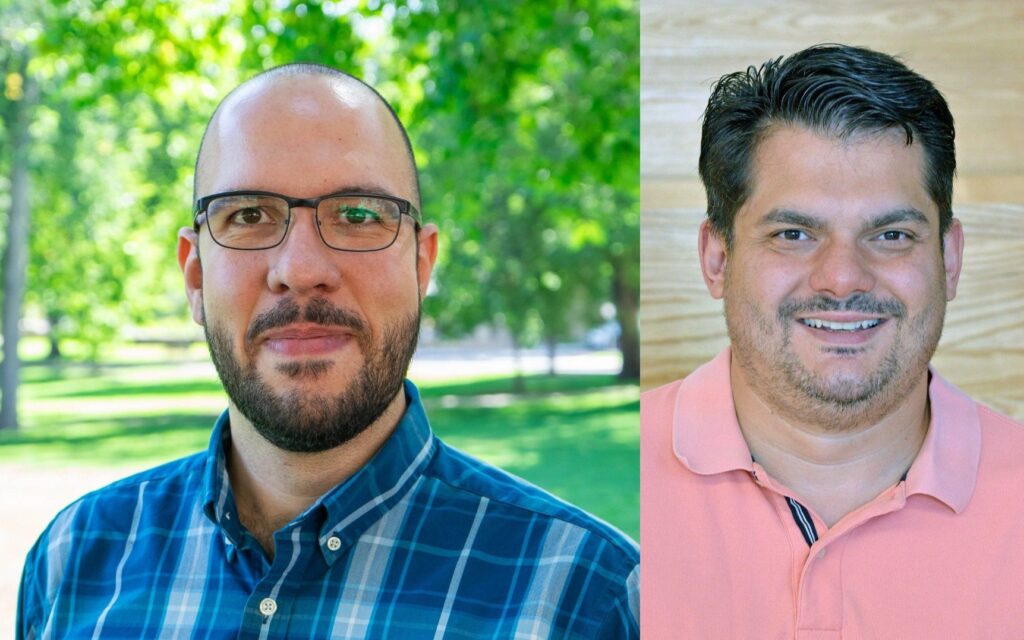Follow Mike Oxley and Anne Oxley on LinkedIn or learn more about Brazilian Nickel on their website here. A link to our previous guide on heap leaching from Anne Oxley at Brazilian Nickel can be found here.
In a remarkable stride for sustainable nickel production, Brazilian Nickel have pioneered a counter‑current heap leaching process that dramatically lowers costs, reduces CO₂ emissions, and eliminates the need for wet tailings dams. Their work on the Piauí project, validated through full‑height demonstration heaps and the PNP1000 pilot, has delivered over 80% nickel recoveries while achieving third‑party Nickel Mark certification.
As part of our deep dive into this game‑changing technology, we spoke with Mike and Anne about the metallurgical innovations, community partnerships, and operational lessons that are shaping the future of laterite nickel.
The following interview is presented unedited to preserve their original responses and offer an authentic look at the advancements redefining nickel production worldwide.
What first drew you to heap leaching as a solution for nickel laterites, and why did you think that it could outcompete more established routes like HPAL or ferro-nickel?
My husband Mike Oxley and I founded Brazilian Nickel in 2013 to specifically commercialise the heap leaching of nickel laterites. We had already been working on the heap leaching of nickel laterites since the early 2000s and decided in 2010 that we would set up our own company to further commercialise the process. We spent the next 3 years investigating various deposits around the world to find a suitable opportunity for a heap leach project. When we identified a project in Brazil in 2013, we founded Brazilian Nickel (BRN) and in 2014 finalised the purchase of the Piauí Nickel Project from Vale.
We have always considered heap leaching to be more sustainable and, importantly when starting a company, more competitive i.e. lower cost than other nickel laterite processes.
Iron contamination is the biggest hurdle in laterite heap leaching. Can you walk us through the key metallurgical breakthroughs your team achieved to selectively leach nickel over iron?
While there are a number of factors to consider, the main driver in reducing iron leaching when compared to the nickel and cobalt is our specific counter-current leaching system that takes an intermediate leach solution (ILS) and passes this over fresh ore to produce the pregnant leach solution (PLS) that is lower in iron and other impurities but contains the highest concentration of the value metals. The specific irrigation rates and acid concentrations in our leaching method are key to obtaining this optimized PLS. The PLS is also very low in acid, as residual acid in the ILS is used when passing through the fresh ore heap.
The optimized PLS feeding the downstream plant, being low in impurities, results in a smaller downstream plant as the size of the impurity issue is reduced.
You ran full-height demonstration heaps in 2016–17 and the PNP1000 until early 2024. What were the most surprising operational challenges you encountered, and how did those lessons shape the design of the full-scale Piauí plant?
The ore in the demonstration heaps was selected to be representative of the ore body as a whole in order to give us all the engineering data for the design of the full-scale operation. It did just this with good extractions in the heaps of >80% Nickel. We also treated the PLS in a simplified downstream plant producing limited amounts of MHP and selling it to overseas customers.
The PNP1000 was designed as a small, continuously operating commercial demonstration and thus treated high-grade ore only.
The PNP1000 taught us many lessons, including:
- Training and working with the local community was a great success. Both in construction and operation, the workforce was >75% local. The state engaged with us to support a specific training regime over several months to find the best local candidates to fulfil the roles needed. This cooperation will be extended to help fulfil the personnel needed for the full-scale project.
- Our ore body knowledge was greatly extended particularly with the higher grade nickel, higher magnesium window allowing better understanding of its treatment and an improved METSIM® metallurgical model.
- Our grade control and ore preparation strategy was validated for use at the full scale.
- In the heap leach area, lessons in irrigation systems, stacking and reclaiming will lead to better operation in the full scale.
- Commissioning the plant well is key to a steady ramp-up, and a very detailed commissioning plan for the full-scale project has resulted. Operational readiness is another key area to manage so that a well-planned handover from construction to the operations team is well orchestrated.
- Successful sale and qualification of our MHP with all the customers we engaged with, including into the EV battery supply chain.
- Implementation and operation of the PNP1000 in harmony with the Environment and Communities set a great foundation for the future development of PNP. It also allowed us to take part in the Nickel Mark third party assurance framework and the Piauí site was awarded the Nickel Mark in 2024.
All of the above have led the BRN team to be extremely well placed to begin construction of the full-scale project upon financing completion.
Heap leaching eliminates wet tailings dams and cuts CO₂ and water use significantly, but it’s still acid-based. How are you engaging local communities and regulators to ensure long-term environmental stewardship?
Sulphuric acid is the most commonly used chemical in the world and acid heap leaching is a frequently applied process in other metals with well-established, environmentally sound designs and operating practices.
In addition to incorporating these best practices into their design and operating model, BRN has undertaken a detailed Environmental and Social Impact Assessment that was submitted to and approved by the responsible environmental authority (SEMARH) and shared with local communities for consultation. In addition, they have developed robust management plans and programs aligned with its major stakeholders, including the communities, regulators and the US International Development Finance Corporation (DFC) which is an indirect shareholder of BRN.
BRN’s Piauí site was awarded the Nickel Mark in 2024. The award demonstrates, through an external assurance process that assesses 33 different ESG-related criteria, that the company meets rigorous standards specific to responsible nickel production and is committed to strong environmental and community stewardship.
With nickel now critical for EV batteries, how are you positioning Piauí’s MHP product within the global cathode precursor market, and what partnerships have been most important to date?
BRN’s MHP is a premium product when compared to other MHPs in the market, with approximately 50% nickel and 45% moisture content, which are the highest and lowest in the industry, respectively. The product is already qualified with many (p)CAM customers from the PNP1000. Funding partnerships for offtake are being actively worked on, including with EU pCAM producers, which allows BRN access to EU critical mineral funds and EU OEMs. BRN also has strategic partnerships in North America, e.g. with the US DFC.
Piauí is remote. How does the simplicity and flexibility of heap leaching translate into CAPEX and OPEX savings versus HPAL when you factor in infrastructure, skilled labour, and port access?
The main cost savings are due to the fact that the process operates at ambient conditions, which means the unitary operations that make up the process are standard, allowing the purchase of straightforward equipment. The one exception is the ion exchange (IX) system that we use in the downstream PLS treatment. The use of the IX process further concentrates solutions for nickel and cobalt and thus results in a smaller MHP production circuit as well.
The optimized process also keeps operating costs to a minimum. The process being simpler and more flexible than HPAL allows greater use of a local workforce as they can be trained to operate the plant more easily.
Each project has different infrastructure issues which will vary the operating cost, but the Piauí project is well served by asphalted roads with access to several ports. BRN’s premium MHP with high nickel and low moisture results in lower volumes being transported and our major reagent is sulphur, which is also easily transported, especially in Brazil which is used to transporting goods over long distances..
Looking beyond Piauí, what remains to be done to make heap leaching standard for other laterite deposits worldwide, especially those with different mineralogy or harsher climates?
BRN’s metallurgical team has already successfully studied and tested 45 different laterite deposits in 15 different countries, all of which successfully leach, irrespective of the different mineralogies.
Water balance in any hydrometallurgical process needs close control, and therefore, rainfall needs to be managed, but this is successfully undertaken for other metal heap leaches in high rainfall areas.
There are many aspects to the successful commercialization of the HL process in nickel projects including infrastructure, climate and distance to ports, but all of these can be managed with a good deposit as the basis of an operation.
BRN is already growing a pipeline of projects in both Brazil and globally to further the successful commercialization of nickel laterite heap leaching.

Hassan graduated with a Master’s degree in Chemical Engineering from the University of Chester (UK). He currently works as a design engineering consultant for one of the largest engineering firms in the world along with being an associate member of the Institute of Chemical Engineers (IChemE).



